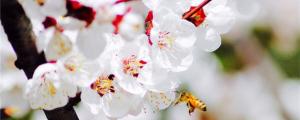How to Tell if a Newly Planted Tree is Dead
Planting a tree can be a rewarding experience as it adds to the beauty of your surroundings and provides an essential source of oxygen. However, it can also be heart-wrenching to see a newly planted tree showing signs of distress or dying. Here are some tips to help you assess the health of your newly planted tree:
Physical Examination of the Tree
The first thing to do is to examine the tree, particularly the leaves, branches, trunk, and roots. Look for any signs of life or death. Start by checking the leaves for any browning or wilting. Healthy leaves look green and supple, while dead leaves look brown or yellow and dry. Also, look at the branches for any signs of growth or decay. Healthy branches are supple and green, while dead branches are brown and brittle. Examine the trunk, particularly at the base, for any signs of decay or physical damage. Finally, check the roots by gently digging into the soil around the base of the tree. Healthy roots are firm and white, while dead roots are brown or black and mushy.
Touch the Bark of the Tree
The bark of a healthy tree should feel firm and tight against the wood. On the other hand, the bark of a dead or dying tree may feel loose, flaky, or come off easily. If you press your finger on the bark and it feels brittle, it's likely that the tree has died or is close to dying.
Water Absorption Test
Another method of checking if a newly planted tree is dead is to perform a water absorption test. Carefully dig a small hole into the soil around the base of the tree and pour water into the hole. Observe if the water is quickly absorbed, which would indicate that the tree is still alive and has healthy roots. However, if the water pools on the surface or is slow to disappear, it suggests that the roots are dead, and the tree is likely to be dead or dying.
Scratch Test
A scratch test can also help determine the vitality of the tree. Use a sharp object like a knife, and scratch a small area of the bark on the trunk gently. If you see green beneath the bark, it means that the tree is still alive. On the other hand, if the exposed area is brown, there is no hope for the tree, and it's time to remove it from the ground.
Summary
In conclusion, planting and growing a tree can be a satisfying experience, but it is important to ensure that the newly planted tree is healthy and alive. By checking the leaves, branches, trunk, and roots of the plant, examining the bark, performing a water absorption test, and conducting a scratch test, you can determine whether your tree is still alive or dead. The earlier the signs of distress are spotted, the better the chances of nursing it back to health. However, if the tree is dead, it's crucial to remove it from the ground promptly to prevent any spread of disease or pests.

 how many times do yo...
how many times do yo... how many planted tre...
how many planted tre... how many pine trees ...
how many pine trees ... how many pecan trees...
how many pecan trees... how many plants comp...
how many plants comp... how many plants can ...
how many plants can ... how many plants and ...
how many plants and ... how many pepper plan...
how many pepper plan...































